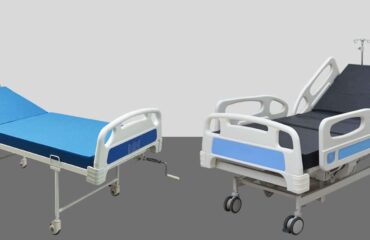Hospital furniture, such as beds, chairs, and tables, are designed to prioritize patient comfort. Comfortable furniture can contribute to a positive patient experience, aiding in their recovery process. Features like adjustable bed positions, soft padding, and ergonomic designs help patients rest better, which can accelerate healing.

Hospital furniture plays a crucial role in contributing to the efficiency, comfort, and functionality of hospitals in several ways:
Enhanced Patient Care
The use of specialized hospital furniture facilitates better patient care by providing healthcare professionals with the necessary equipment and tools to conduct medical examinations, treatments, and procedures safely and effectively. Well-designed furniture can improve workflow and patient outcomes.
Improved Safety
Hospital furniture is designed with safety features such as sturdy construction, anti-microbial materials, and secure attachment mechanisms to prevent accidents, falls, and injuries among patients and staff. Properly designed furniture can help reduce the risk of incidents within healthcare facilities.
Infection Control
Hospital furniture is often made from materials that are easy to clean and disinfect, helping to maintain a hygienic environment and prevent the spread of infections. Smooth surfaces, non-porous materials, and seamless designs minimize the accumulation of pathogens and facilitate thorough cleaning protocols.
Efficient Space Utilization
Hospital furniture is designed to maximize space utilization within healthcare facilities, optimizing the layout of patient rooms, treatment areas, and waiting rooms to accommodate the needs of patients, staff, and visitors. Compact and multi-functional furniture solutions can help maximize available space and improve the flow of people and equipment.
Functional Design
Hospital furniture is engineered with functional design principles to meet the specific requirements of healthcare settings, including ease of use, accessibility, and durability. Thoughtful design features such as adjustable height, integrated storage, and mobility options enhance usability and versatility.
Customization Options
Hospital furniture is available in a wide range of configurations, sizes, and finishes to suit the unique needs and aesthetics of different healthcare environments. Customizable options allow healthcare facilities to create cohesive interior designs that reflect their brand identity and enhance the overall patient experience.
Staff Ergonomics
Ergonomically designed hospital furniture supports the comfort and well-being of healthcare professionals by reducing physical strain, fatigue, and injury risk associated with repetitive tasks and prolonged standing. Adjustable workstations, supportive seating, and ergonomic accessories promote proper posture and enhance productivity among staff members.
Patient Dignity and Privacy
Hospital furniture contributes to maintaining patient dignity and privacy during medical consultations, examinations, and treatments by providing appropriate barriers, privacy screens, and individualized seating arrangements. Respecting patient confidentiality and comfort fosters trust and satisfaction with healthcare services.
Long-Term Value
Investing in high-quality hospital furniture offers long-term value to healthcare facilities by minimizing maintenance costs, reducing the need for frequent replacements, and enhancing the overall reputation and appeal of the institution. Durable, well-designed furniture solutions can withstand heavy use and evolving healthcare needs over time.


